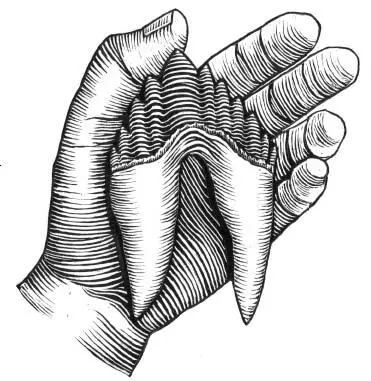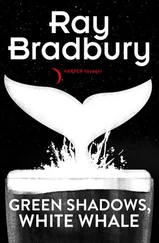Transformation and novelty are recurring themes in whale evolution as much as they are for any group in the tree of life, and it is sometimes difficult to parse the distinction between them. Consider how the feathers that most birds use today for flight are elaborations—transformed many, many times over—from basic scales that once covered their dinosaur ancestors. Or how turtles, early in their evolutionary history, acquired shoulder blades inside their rib cage; turtles’ ribs later fused with other bones so that every turtle thereafter, for the past 200 million years, has had a shell with its shoulders tucked firmly inside. In both of these cases, evolutionary novelty does come from somewhere in the body—it’s an extreme flavor of transformation that starts with some available parts—but novelty is different because of its consequences. Whereas a transformation can be the reduction of parts or a change in size or proportions, a novelty is a one-time evolutionary appearance of a new structure that enables the evolutionary success of all of its descendants. Today’s whales are exemplars of the great success of evolutionary novelty, with echolocation in toothed whales and filter feeding in baleen whales enabled by biological apparatuses present in none of their forebears.
Evolution is the intellectual glue that connects living whales, in all of their seeming weirdness, to their deep ancestry, which is both incomplete and still not entirely known. Skulls point us to these evolutionary clues in a tangible and clear way; and without these insights, and the millions of years that brought these changes about, it would be very hard to illuminate the connection whales have with other closely related mammals.
My way back to whales, as a scientist, has always involved skulls in one way or another. In college I puzzled over a half-rotten dolphin head when our field class, on a barrier island off the coast of Georgia, discovered its carcass buried in the sand. The putrid smell dispersed the rest of the class, but I held fast. I wasn’t riveted by the grotesque allure; instead I was captivated for the first time by the thought of how, exactly, a whale might become a fossil.
In graduate school, I sought fossil whale skulls peeking out of seaside cliffs or crumbling out of rock formations in badlands that were once seafloors. Cetaceans became my vehicles for understanding life over geologic time, across scales so vast that we cannot truly comprehend them, even if paleontologists casually discuss geologic markers as if referring to last week’s dentist appointment. And it all led me to the Smithsonian, where I tend to the world’s great collection of fossil whale skulls.
However, part of the deal with being a museum scientist, especially at the Smithsonian, is that people ask you for tours. It’s more than a fair trade. First, I like giving tours. They give me an excuse to try out new ways to talk about ideas—the big ones, like the evidence for evolution and extinction—that not only excite me but also explain how whales came to be. Also, tours often involve children, and children are usually the toughest audiences of all, whether they’re whale huggers or fossil fiends. If I can figure out how to keep them interested, even for a short show-and-tell, then I think I’ve done my job. And who knows, I might even be convincing enough to ignite more than a passing interest.
My friend and colleague Megan McKenna first taught me about whale heads and their inner biosonar anatomy when we were both in graduate school, so when she brought her family recently for an early-morning tour before the museum opened, I was excited at the opportunity to settle a debt. Her four-year-old daughter was just a bit older than mine. The museum’s halls, especially when they’re empty, can be intimidating spaces, so I started slowly—I didn’t want to overwhelm or manufacture too much excitement.
As we walked into the Sant Ocean Hall, we stopped short underneath the imposing right whale model, and turned to face the eel-like skeleton of Basilosaurus , grimacing from above. Basilosaurus is an early whale several million years younger than Pakicetus and Maiacetus but it looks worlds apart in size and shape. Its dinosaur-sounding name literally translates from Latin as “king lizard,” in a nod to its serpentine, bus-length body. The first fossils of Basilosaurus were collected from the chalky marls of rural Arkansas and Alabama in the early nineteenth century. With a skull over three feet long, jaws bearing palm-sized, saw-shaped teeth, and individual vertebrae large enough to serve as stools, a Basilosaurus skeleton gives every impression of belonging to a sea monster—and its name has stuck, if only for the conventions that scientists use to name species.
Unlike today’s whales, Basilosaurus has a head that does not dominate its body, arms that crook at the elbows, and a surprising, diminutive set of legs that could never have supported its large weight on land. But Basilosaurus has an involucrum like all the other early land-dwelling whales, and its ear bones floated in a sinus space below its skull. Basilosaurus did not echolocate, nor filter feed, leaving it caught somewhat in an evolutionary middle ground for whale evolution: one of the first fully aquatic whales, completely unreliant on land, yet still carrying many of the biological apparatuses of its terrestrial ancestors.

A Basilosaurus tooth
As I walked with Megan under the skeleton, I pointed to its hind limbs and joked aloud about how they dangled like poorly placed, miniature landing gear. Megan then leaned down to her daughter. “Hey, Etta, Nick studies whale bones just like those ones.” Etta looked at me intently, mulling the assertion. “Why?”
I opened my mouth to deliver a canned response involving school, science, and curiosity, more boilerplate than authentic. I knew I could do better. I waited a few beats.
“Their bones all tell stories,” I said, “about where whales came from.” She glanced up at Basilosaurus looming from the ceiling, like a giant, flippered, macabre snake. “And if you become a scientist, you can learn to read them and know their stories.” I knew I had her attention. “But they sure don’t just show up here in the museum all put together,” I smiled. “You have to find them first.”
I walked with my eyes trained on a long, gray road cut through a hillside on a cattle ranch. In the late-afternoon California sun, the waving golden grass gave the hill the look of an enormous, shaggy animal, revealing its sedimentary flank. I followed a small path, parallel to the exposed fossil-rich layer. Walk, stare, walk some more, scrape the exposure, and then walk again; maybe you get lucky.
A few yards away from me, my colleague Jim Parham was doing the exact same thing. I’ve known Jim since graduate school, and we don’t need to say much to each other in the field. Jim’s an expert on turtles and other reptiles. As it is for me with whale bones, Jim has seen enough specimens that even the smallest fragments of fossil shell can help him solve riddles about turtle origins, which stretch back even deeper in geologic time than whales, though we tend to find fossil sea turtles in the same type of rock as fossil whales. Jim and I reliably fall on the same page, by temperament and by rock units.
Читать дальше














